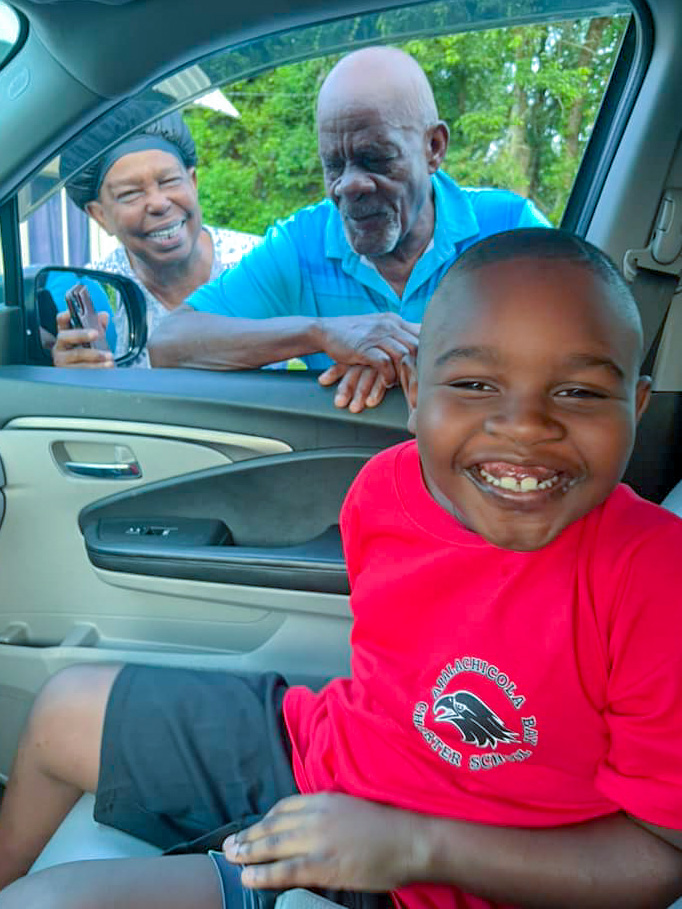Legacy Post Disclaimer
This is a #Legacy post imported from The Apalachicola Time’s previous platform. If you’re experiencing issues with this article, please email us at news@nevespublishing.com.
Heritage Dinner breaks some news
Author and historian Dale Cox is always an engaging speaker, and at Saturday night’s Heritage Dinner at the Holy Family Senior Center he didn’t disappoint.
His fascinating description of what happened at Prospect Bluff, the so-called Negro Fort at Fort Gadsden, was a delight to the packed room of attendees.
But this year, Cox went even further, and broke some news.
He said he has discovered a treasure trove of the writings of Dr. John Gorrie that had been in the hands of descendents who now live in New Jersey. Included in these, he said, were remnants of the original ice machine that Gorrie worked to patent, and which would grant him the distinction of being the early founder of what would become air conditioning.
“It’s all very fragile, a very tender collection,” Cox said.
After the catered meal created by Chef Brett Gormley was served, Cox wove a fascinating tale of what took place when a unit from the U.S. Navy, in the aftermath of the War of 1812, traveled down to Prospect Bluff to handle what was happening at the abandoned Spanish fort at the confluence of the rivers, and which was inhabited by Indians, and runaway slaves, known as Maroones.
An errant cannon shot destroyed where ammunition was being stored, and in the massive explosion that followed, an estimated 273 men, women and children were killed, the deadliest mass casualty event up to that time. It all took place under a blood-red sky, in the “year without a summer,” on a cold day in 1816.
“They didn’t think they had the range to hit the fort. They wanted to catch the houses on fire,” Cox said. “It hit a pine tree and almost like a catapult, it landed in the middle of the fort. No one intended it, it was not some great precise shot.”
The women and children had been filling gunpowder bags and the black power erupted in flames.
Cox, author of more than a dozen books on Southern history and culture, will speak on the Florida Territorial Period, 1821-1845, has told the story in his new work “The Fort at Prospect Bluff,” which along with several of his other works, including “The Battle of Marianna, Florida,” “The Battle of Natural Bridge, Florida,” and “Milly Francis: The Life & Times of the Creek Pocahontas,” sold well before, during and after the dinner.
He went on to recount the history of Fort Gadsden and offered a passionate plea for it to be reopened, since it has been closed for nearly four years in the aftermath of Hurricane Michael.
Apalachicola Area Historical Society President Caty Greene, who oversaw the planning of the revival of the annual dinner, after COVID 19 put a damper on it, in her introduction of Cox offered a detailed account of grant monies that the AAHS has received, and is vying for.
The Raney House Museum, at 128 Market Street at the corner of Avenue F in downtown Apalachicola, is open from 10 a.m. to 4 p.m. Tuesday through Saturday. For more info on AAHS, or to become a member, contact Caty Greene at 850-323-2305 or catygreene32320@gmail.com.





Meet the Editor
David Adlerstein, The Apalachicola Times’ digital editor, started with the news outlet in January 2002 as a reporter.
Prior to then, David Adlerstein began as a newspaperman with a small Boston weekly, after graduating magna cum laude from Brandeis University in Waltham, Massachusetts. He later edited the weekly Bellville Times, and as business reporter for the daily Marion Star, both not far from his hometown of Columbus, Ohio.
In 1995, he moved to South Florida, and worked as a business reporter and editor of Medical Business newspaper. In Jan. 2002, he began with the Apalachicola Times, first as reporter and later as editor, and in Oct. 2020, also began editing the Port St. Joe Star.